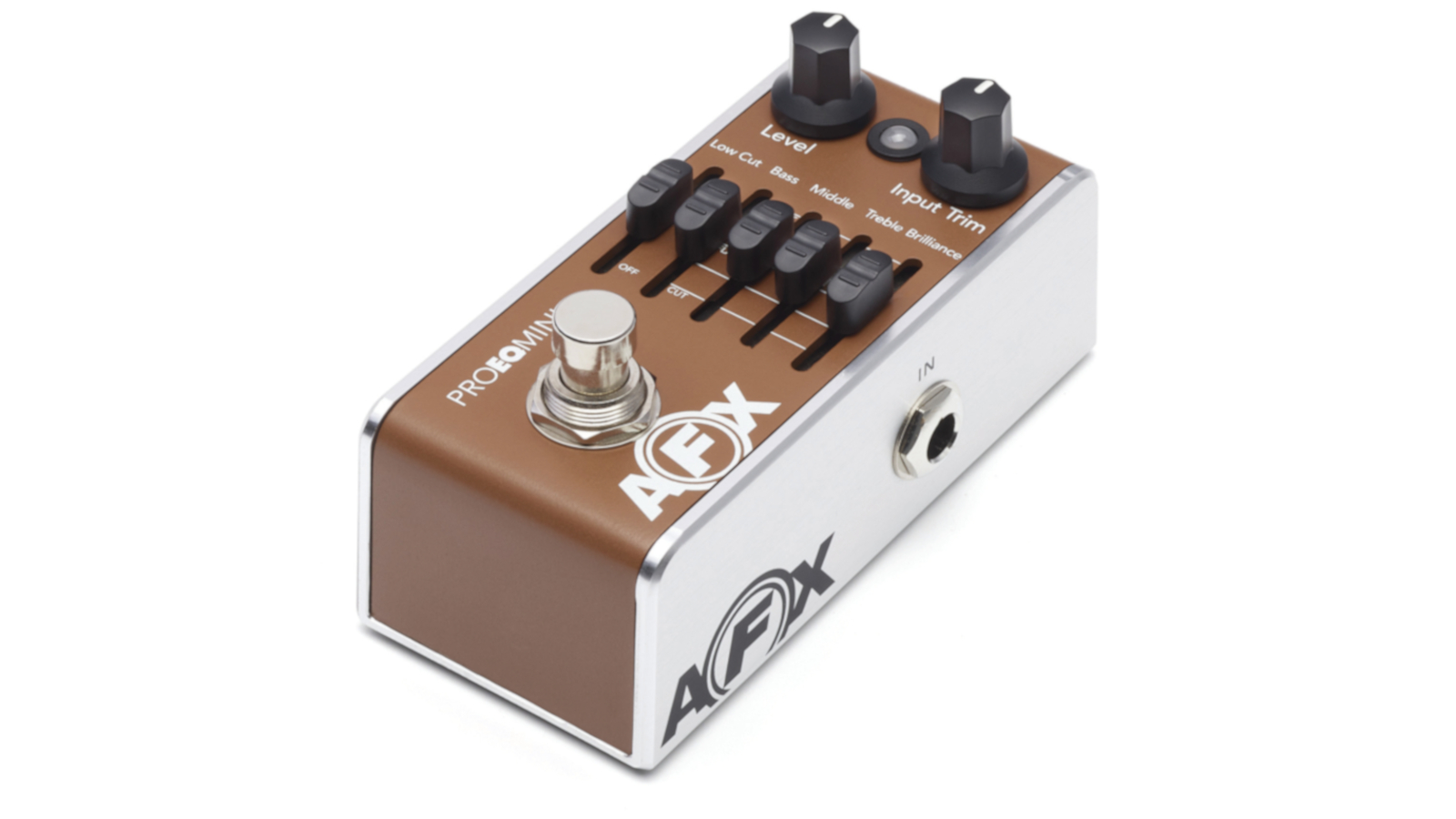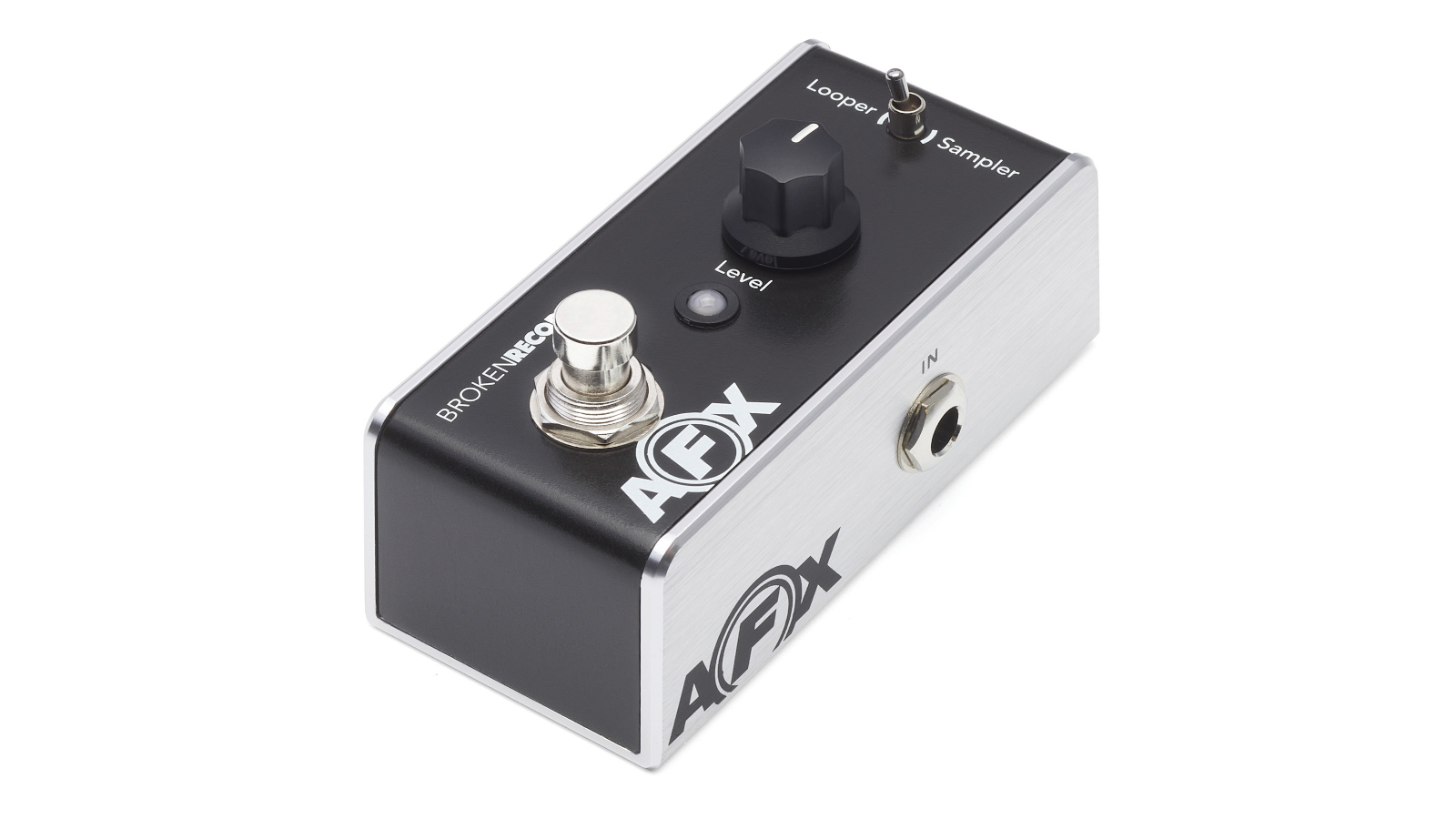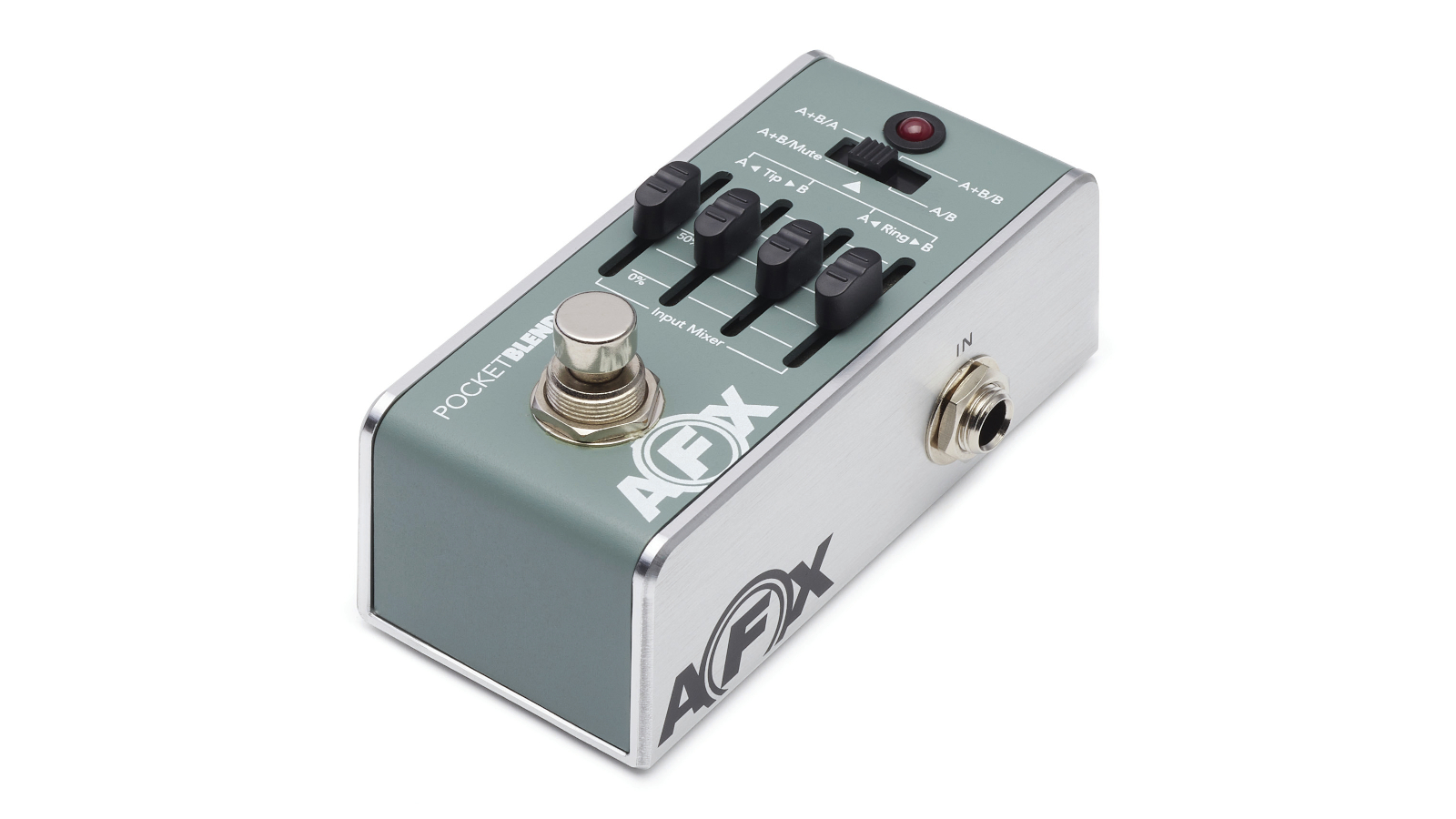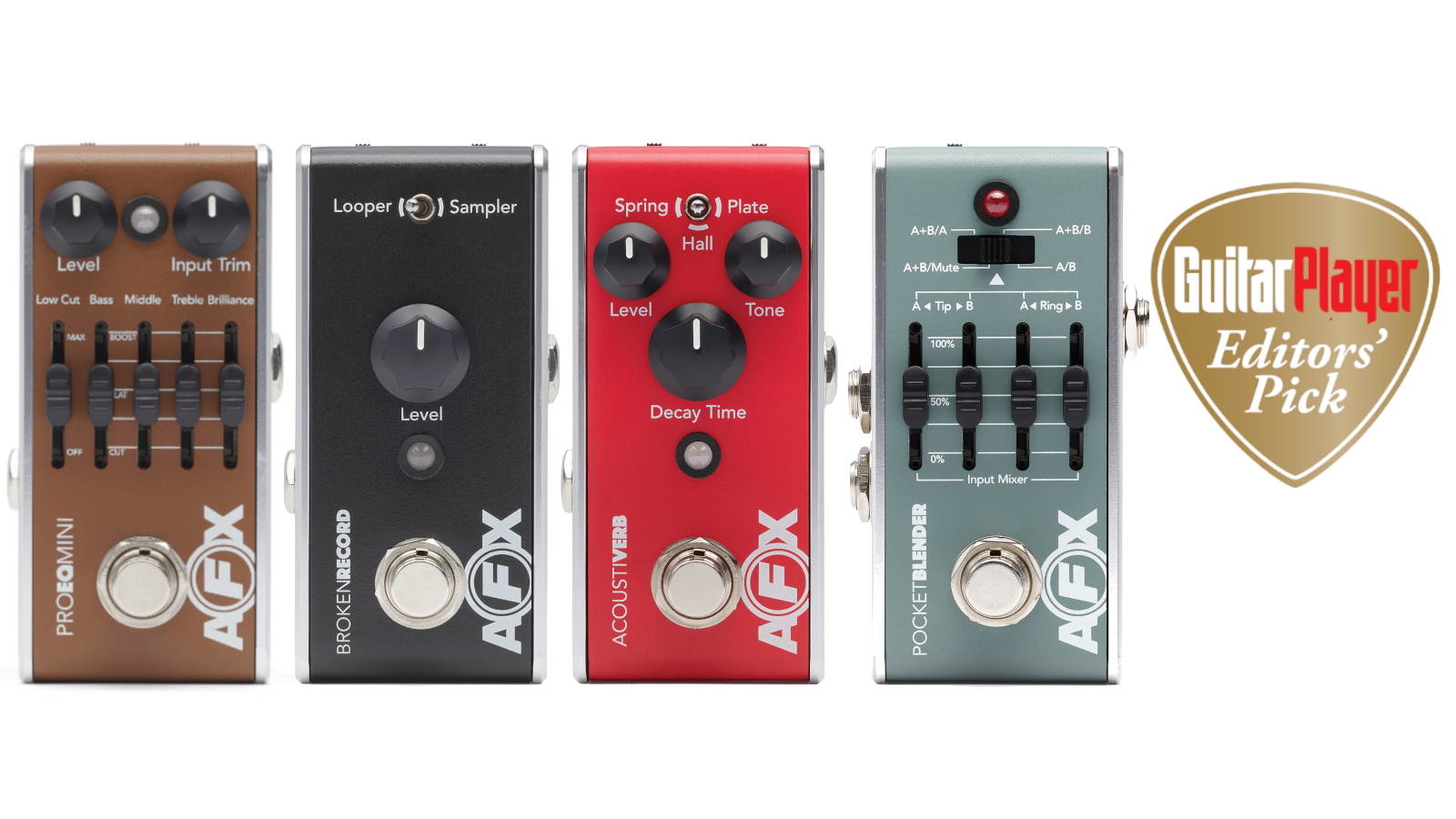GuitarPlayer Verdict
To find this kind of flexibility and sonic superiority from a set of miniature and affordable pedals is hugely impressive
Pros
- +
AFX PRO EQ MINI: Very practical for sculpting awesome acoustic tones easily
- +
AFX BROKEN RECORD: Simple operation with rudimentary controls, quality sound
- +
AFX ACOUSTIVERB: Intuitive layout, simple yet flexible. Luscious reverbs
- +
AFX POCKET BLENDER: Astounding range of practical options for signal splitting, channel switching and AB/Y via relatively simple interface
Cons
- -
AFX PRO EQ MINI: None
- -
AFX BROKEN RECORD: One foot-switch does everything, so know your functions and keep track
- -
AFX ACOUSTIVERB: None
- -
AFX POCKET BLENDER: Keeping track of A/B mix selection without indicator light
You can trust Guitar Player.
Fishman joins the revolution for effects tailored to acoustic guitars with four AFX Mini pedals. They include the Pocket Blender AB/Y mixer, the Broken Record looper/sampler, the Pro EQ Mini preamp and equalizer and the AcoustiVerb reverb.
Each pedal is voiced to play nice with acoustic amplification, something that Fishman, manufacturer of the venerable Loudbox, knows a thing or two about. The AFX Mini concept provides powerful 32-bit processing in a durable aluminum enclosure that has a footprint less than two inches wide, under four inches deep and not quite two inches tall. On the surface, each pedal is relatively straightforward, but there’s a lot more under the hood.
AFX effects process in parallel, meaning the effected signal runs alongside the pure direct signal, not on top of it. The pedals can operate in mono with standard instrument cables, but they also have an option for dual-channel audio when using a TRS stereo cable (not included). You can then assign each pedal using a switch on the back to set the audio path to tip or ring, and choose between buffered or true bypass.
AFX PRO EQ MINI

Based on Fishman’s Platinum preamp, the Pro EQ Mini provides up to 20dB of gain and impedance matching for a variety of pickup types. The Pro EQ Mini has a level control, an input trim to dial in the best sound with the lowest noise, and five EQ faders – bass, middle and treble, plus low cut and brilliance – to aid in sculpting your acoustic guitar’s voice.
In use, the EQ helped home in on the bass, treble and middle ranges of whatever instrument I tried, from a Taylor 816 Grand Symphony to a Cole Clark True Hybrid to a Martin CS-SC-2022, which are all very different. The brilliance control was subtle but handy, while the low cut was a godsend. One could argue that’s the most important EQ control for an acoustic tone hound, as it sets the stage for where the signal sits in a mix.
On a big guitar, I used it to harness low-end boom, especially in conjunction with significant amounts of reverb. With thinner instruments, setting the low cut at the very bottom, bringing up a bit of the bass EQ and cutting some mids made the instruments sound much beefier without feeding back. The Pro EQ Mini has a phase switch to help curtail feedback, and the pedal can be configured as an audio mute, which is especially handy if you have no other mutes in your signal chain.
Specifications
- CONTROLS: Level, input trim, level indicator LED. Switches: buffered or true bypass; audio path: tip (mono) or ring
- FOOT SWITCH: Assignable as on/off or audio mute
- I/O: ¼” TRS input and output jacks
- BUILT: China
AFX BROKEN RECORD

Here’s a keep-it-simple looper/sampler that can hold up to six minutes of 24-bit audio, which can also be transferred to a computer. In sampler mode, the main foot switch can trigger audio to play once and then stop. The pedal will remember what you’ve recorded even when powered down, and the same is true for the last recorded loop when in looper mode. That’s how I was mainly interested in using the Broken Record.
When a looper has one button, that button must do everything, so you’re going to have to use it in various ways, such as multi-tapping and holding. That’s true here, and while it works as you would expect to record, start or stop play, overdub, undo or erase, it’s a good idea to study the manual to get the gist. While I prefer a looper with at least two buttons, the AFX Broken Record functions and sounds as well as any one-button looper I’ve come across.
Specifications
- CONTROLS: Level, LED indicator red/yellow/ green. Switches: looper or sampler mode; buffered or true bypass; audio path: tip (mono) or ring
- FOOT SWITCH: Record/play/stop/overdub/ undo/erase
- I/O: ¼” TRS input and output jacks, USB-C for audio phase transfers
AFX ACOUSTIVERB
The AFX Acoustiverb has three reverb types on offer: spring, hall and plate. There’s a mini-switch to toggle between them, as well as level and tone knobs (positioned left and right, respectively) and a larger knob to control decay time. The controls only manipulate the affected sound, not the direct audio. I appreciated being able to dial in the desired amount of top-end shimmer without brightening the whole guitar tone. Turn it up and the selected reverb glistens. Dial it back and the effect tucks in to become a bit less noticeable.
The spring setting offers the familiar sound of a classic tube amp. Switching to the hall reverb is a significant step, as the effect opens up and really resonates. Switching to plate reverb is less dramatic, the main difference being a more bellowing bottom-end resonance that becomes very evident when you suddenly mute a chord.
I can see why the primary control is decay time, as it has the most dramatic impact, such as allowing you to make the hall reverb sound more like a room reverb. And I appreciate how the pedal lets the reverb spill over even after you hit the bypass button when it’s in buffered mode.
The reverbs are all very high quality, and the pedal proved extremely easy to use. I mostly left the level and tone knobs at noon and toggled between the three reverb types, depending on the tune, and adjusted decay accordingly. The AFX AcoustiVerb puts a lot of ’verby goodness at your fingertips.
Specifications
- CONTROLS: Level, tone, decay time. Reverb select: spring/hall/plate. Switches: buffered or true bypass; audio path: tip (mono) or ring
- I/O: ¼” TRS input and output jacks
AFX POCKET BLENDER

This pedal for AFX chains is an AB/Y + D.I. with a two-channel mixer. It lets users of dual-element pickup systems balance the signals individually and facilitates sending them to separate amps with their own effects assignments – which I did, using a Taylor 816ce with a Fishman PowerTap Rare Earth.
It’s pretty wild – and rather confusing. For instance, There are many modes to choose from and an indicator light that only indicates on and off, not mix A or B. (Fishman says that feature had to be sacrificed to keep the circuitry completely analog with top-shelf components.) Still, the dual system is a ton of fun once you figure it out.
I sent the Rare Earth’s magnetic signal to a Hughes & Kettner TubeMeister 18 for a slightly overdriven tone to complement the very lively and ambient body sensor signal feeding into a brand-new Taylor Circa ’74 amp (look for a review soon). I used that amp for loop beds created on the Broken Record and added plate reverb from the Acoustiverb to make the percussives in my fingerstyle thump and pop. Blending the signals from the two amps into one dual-tone monolith was absolutely awesome!
Specifications
- CHANNELS: 2
- MODES: 4-position toggle switch offers: A+B/A, A+B/Mute, A+B/B, A/B.
- CONTROLS: Four input faders control tip and ring for each channel. Switches: ground/lift (on back). Foot-switch assignable to A/B mixes or global mute
- I/O: ¼” input jack, two ¼” output jacks for AB/Y and D.I.
CONCLUSION
Fishman’s AFX Minis offer a lot of options for the acoustic-electric enthusiast. You can be up and running with a basic mono signal in moments, and while most will take that path, others will enjoy going down the dual-audio-path rabbit hole to discover whole new worlds via an infinite number of tonal blends.
To find that kind of flexibility and sonic superiority from a such a set of miniature and affordable pedals is hugely impressive, and earns the AFX Minis an Editors’ Pick Award.
Visit Fishman for more information.
Jimmy Leslie has been Frets editor since 2016. See many Guitar Player- and Frets-related videos on his YouTube channel, and learn about his acoustic/electric rock group at spirithustler.com.
"The only thing missing is the noise from the tape loop." We review the Strymon EC-1 Single Head dTape Echo, a convincing take on a very special vintage tube Echoplex
"BigSky MX will be replacing the BigSky as my go-to reverb pedal. I’ve heard nothing that covers all the bases with such pristine and detailed audio quality." We crowned the Strymon BigSky MX the champ of multi-reverb pedals











